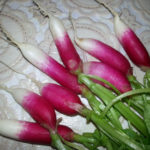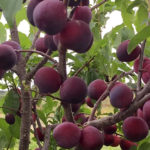Rose of Osiana
Roses are different: luxurious and mysterious, graceful and charming, bright and original. The Osian tea hybrid, which will be discussed in our article, is gentle, modest and seemingly unearthly. This plant makes you feel genuine delight when you admire its lush flowering. Settle this culture in your garden, and it will become your main favorite.
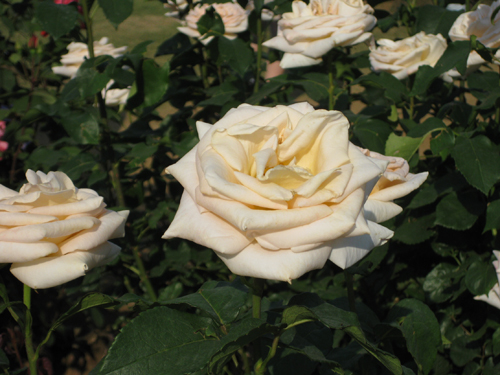
History of creation and description of the variety
Osiana was created by breeder Evers in 1988. Other variants of variety names: Oceana, Ocean. The culture is the owner of the Court of Show / Honor, Golden Triangle Rose & Garden Society prize, which was received in 1999 in the United States.
This is a wonderful variety of roses, which differs from other tea hybrids by the presence of single, elegant, densely double flowers, which have an absolutely incredible color, in which there are beige, cream, salmon, apricot, peach tones, as well as shades of ivory and champagne. In general, the main color of the buds can be described as creamy. Fully open flowers are pale porcelain pink. Their shape is impeccable, and the size varies from 10 to 11 cm. At the edges, the petals gradually fade with age, brightening, while the color of the central part of the buds remains more saturated. Nevertheless, this transition of shades from one to another is quite smooth, without clear boundaries. The flowers of the ornamental plant consist of 40-45 delicate petals and spread a pleasant fruity aroma around them, which becomes more intense in hot summer weather.
Osiana is a multi-flowering variety. Its buds open very slowly and stay on the bush for a long time. The flowering of the variety is abundant, bewitching. The rose bush forms a strong, powerful, with straight, long shoots, colored crimson at a young age. Large leaves of a bright green hue are a beautiful backdrop for creamy flowers. The shrub reaches 120-175 cm in height, 1.2 meters or more in width.
Osiana is moderately resistant to powdery mildew, black spot and many other diseases. Its shoots can withstand frosts down to -23 ° C without shelter. A significant drawback of a lovely rose is the weak resistance of delicate flowers to rain.
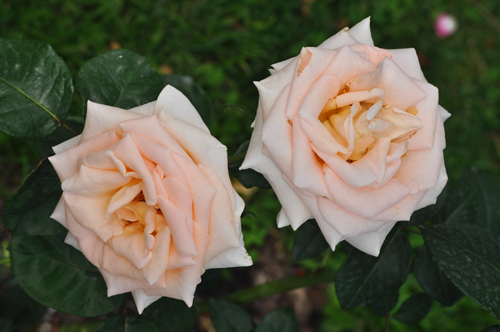
Features of agricultural technology
Well-lit places are chosen for planting roses. However, the light should be in moderation, since with prolonged exposure to direct sunlight on the leaves, burns may appear on the leaves, and the impeccable color of the flowers can quickly fade. Osiana does not like heat, therefore, when cultivating crops in the southern regions, it is better to place it in partial shade. The plant must be protected from cold drafts. In no case should it be planted in a lowland and in an area with a high level of groundwater. An ornamental perennial is quite picky about soils. For growing a tea hybrid, it is better to use a fertile, loose, slightly acidic soil. A high-quality drainage layer should be provided at the bottom of the planting pit. To increase the degree of soil fertility, you need to mix it with compost, humus, peat and sand. The hole is made at least 0.6 meters deep. When deepening, the root collar should be several centimeters below the soil level. After planting, the plant must be watered under the root with lukewarm, soft water. It is important to mulch the soil around the perennial with peat so that moisture remains in the soil under the flower for as long as possible.
Osiana is a capricious culture, and therefore maximum attention should be paid to caring for it. In the dry summer period, the bush should be watered intensively, the rest of the time - moderately. Hard water cannot be used for these purposes categorically in order to avoid soil salinization. A young rose needs abundant, regular watering. Top dressing is of great importance for the normal growth, development and full flowering of the Osiana cultivar. They are recommended for spring, summer and early fall.Spring feeding prescribes the introduction of nitrogen fertilizers under the plant; summer, requiring execution at the stage of setting buds on a bush and in the flowering phase, provides for the use of mineral complexes. In autumn, the rose is fed with phosphorus-potassium concentrate.
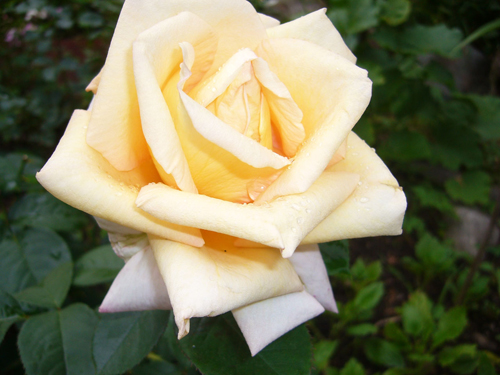
In addition, the compulsory measures for the care of the German beauty include removing weeds near the plant, loosening and mulching the soil in the zone of the trunk circle, and sanitary pruning. The latter is shown to culture in spring and autumn and consists in removing frozen, diseased, dry and damaged branches from the bush. If desired, or if necessary, the perennial crown can be given a neat shape. In the summer, the rose is promptly removed from faded flowers and spoiled buds. This will stimulate the flowering of the noble plant. For the same purpose, buds should not be allowed to appear on the crop in the year of planting. Osiana should be covered for the winter. First, the bush is cut off, then it is covered with earth, and only after that it is insulated, protecting it from future frosts. It is best to build a frame over the plant, on which you need to stretch a plastic wrap, but you can cover the perennial with any non-woven material or spruce branches, dry foliage.
Since the rosette's immunity to diseases is not too high, in order to reduce the risk of diseases appearing on the tea hybrid, it is advisable to spray the shrub with a fungicide solution 2-3 times during the summer season. If the rose is attacked by pests, any insecticide will fight them.
Use cases
The fabulously beautiful Osiana tea hybrid is very popular not only among flower growers, but also among landscape designers. They use slender shrubs of this variety to decorate hedges, flower alleys, and also to divide the garden into zones. This plant can be safely cultivated in mixborders. It goes well with a variety of coniferous crops: both miniature and tall. Classic flowers in creamy porcelain tones look gorgeous against the background of dark green needles. You can place a decorative perennial in single plantings, as well as in groups on an emerald lawn. When creating mixed compositions as companions for Osiana, choose perennials and perennials whose inflorescences have delicate pastel colors, including light pink, pale yellow, snow-white, greenish, pale blue and light lilac. Rose buds are suitable for cutting as they remain attractive and fresh for a long time.
